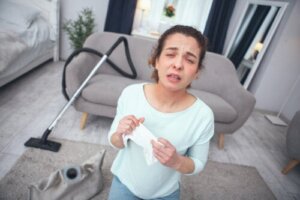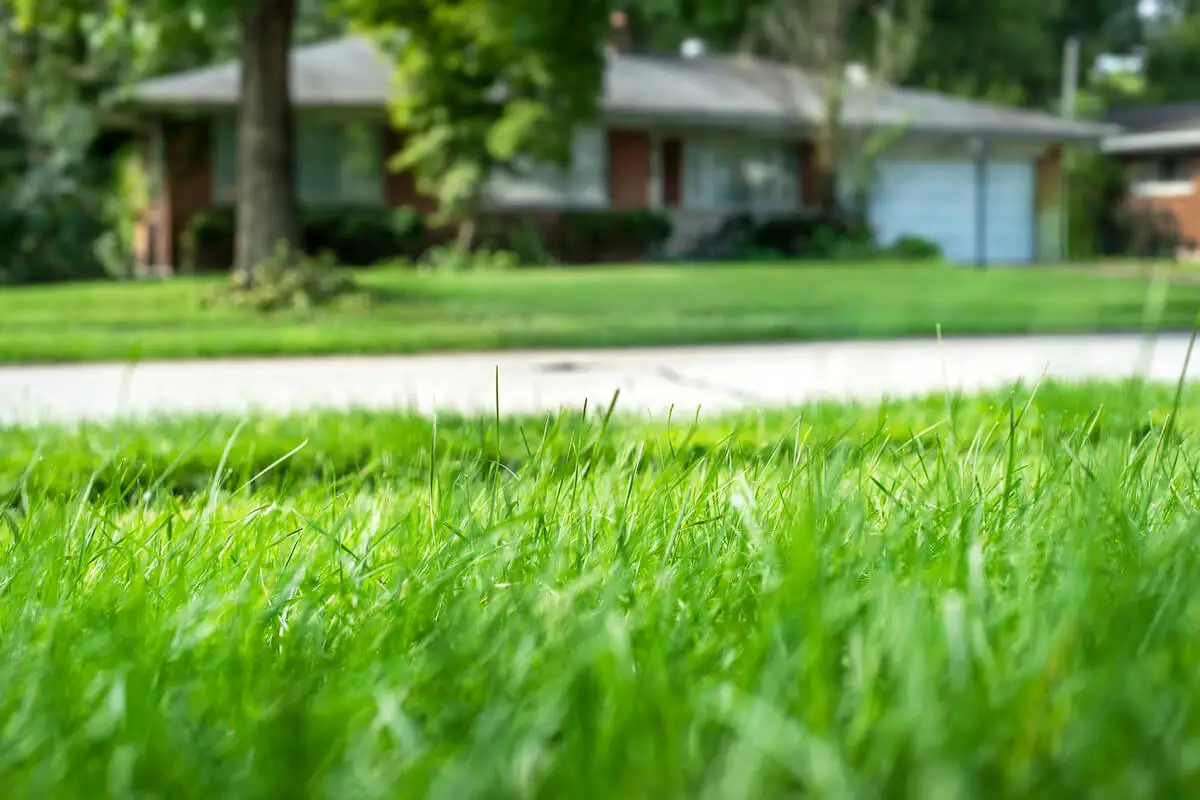Cleaning Tips for a Pollen-free Home


Reviewed and approved by the nurse Leidy Mora Molina
To keep your home free of pollen, it’s not necessary to lock yourself indoors or remove all the plants. Pollen is a set of grains produced by some plants with seeds, and there are natural solutions that limit it in our environments.
Thanks to its tiny size, it’s common for pollen to circulate through the air of the home and adhere to all kinds of surfaces. Many people suffer from allergies to these microscopic grains.
It’s enough to implement some easy strategies to prevent pollen from getting into your home and maintain sufficient filtration. This will also reduce the overall dirt in the home.
Eliminating plant-derived granules doesn’t have to mean giving up any kind of natural decoration. There are a number of strategies, habits, and filters that allow you to keep your home free of pollen. In addition, they work to reduce dust, dust mites, and other allergens.
Place specific plants
Plants work as a decorative element that also brings a dose of vitality to the environment. As if that weren’t enough, some varieties also help to cleanse the air. For example, tulips, roses, spider plants, shrubs, and begonias all do this.
There’s a large number of indoor plants so that the choice can be adjusted to your personal taste and space. However, it’s also possible to have plant life in the garden without risking constant sneezing.
According to a study by the Complutense University of Madrid, pollen is the most common cause of respiratory allergies worldwide. In addition, it triggers 40% of rhinoconjunctivitis and 27% of asthma cases.
To counteract pollen levels in the home, some varieties are allies in purification thanks to the fact that they absorb these compounds:
- Philodendron: This is an elegant plant with large leaves taht’s ideal for indoors and for hanging shelves.
- Ivy: Ivy can work both indoors and in gardens, and it’s one of the species with the most purifying characteristics.
- Pothos: These are a very popular variety of indoor plants thanks to their ease of care and hardiness.
- Phalaepnosis: In addition to their purifying properties, these plants look great for home decoration with their aesthetic white flowers.

You can use Pothos plants to help filter the pollen from your home.
Encourage air circulation for a pollen-free home
To keep your home free of pollen, it’s also important to have ventilation. The best times to open windows are midday and evening. This is because the highest amount of pollen is concentrated in the air at those times.
However, you should only open them for a few minutes and then close them, especially on sunny and windy days, since it’s more likely to re-enter. If you have air conditioning, help improve your home’s ventilation with the device.
On the other hand, always keep windows and curtains clean. Pollen tends to get on these elements entering the house.
We think you may be interested in reading this, too: Eco Friendly Methods to Clean and Disinfect the Fridge
Take off your shoes
One of the biggest pollen carriers is footwear. To avoid bringing dust and dirt into the home, it’s best to leave your shoes outside if you have the space to do so.
Place doormats or rugs for a pollen-free home
Along with the advice to remove shoes, placing a rug at the front door of the home can help. By leaving it on the outer side, feet can be wiped before entering, thus removing as much pollen as possible.
Then, another mat on the inner side provides a second chance for filtration. Shaking and washing carpets once or twice a week is also recommended.
Hygiene for a pollen-free home
These microscopic grains often adhere to various parts of the body, such as hair, skin, and even the nostrils. After coming home, taking a thorough shower prevents pollen from being distributed throughout the environment.
Clean your pets
Pollen attaches easily to pet hair. Therefore, it’s likely that your dog is entering with a lot of pollen after every walk. Keeping them clean helps to have a pollen-free home.
Clean your furniture
Just as personal hygiene is important, frequent cleaning of furniture helps to keep your home pollen-free. When doing so, it’sbest to start at the top and work your way down the shelves to capture as much of the dust as possible.
Use appliances conscientiously for a pollen-free home
To prevent the circulation of dust and pollen, it’s also important to clean the filters of air conditioners and other heating systems. Cleaning them once a year prevents too much dirt from accumulating in the openings. As for fans, it’s best not to use them, as they favor the spread of dust and pollen particles.
Keep your lawn short
If you have a yard, you should keep your lawn short so that pollen doesn’t accumulate among the weeds and then enter yourhome. However, it should not be mowed on days when it’s very wet or windy, as it clings more easily to the body.

Treating clothes
Many people who have gardens or outdoor spaces choose to dry clothes in the sun. However, this isn’t a good idea if you’re prone to allergies.
Exposing clothes to sunlight causes pollen to adhere to the fibers of the clothing and then come into contact with the skin. For this reason, it’s a good idea to use a dryer.
Like this article? You may also like to read: How to Clean the Beauty Blender or Blurring Sponge Without Damaging It
Objects and tools for a pollen-free home
Finally, we’d also like to include the following options:
- Special filters for air conditioners
- Specific vacuum cleaners
- Air purifiers
In severe situations, it’s possible to turn to these commercial items designed to filter the air and achieve a pollen-free home. They have the ability to capture hair, dust, and even dust mites.
It’s also important to pay attention to the common symptoms that cause allergies, such as congestion and itchy throat. If discomfort persists, consult a specialist.
All cited sources were thoroughly reviewed by our team to ensure their quality, reliability, currency, and validity. The bibliography of this article was considered reliable and of academic or scientific accuracy.
- Sánchez, Jorge, Caraballo, Luis, Repercusión de la contaminación del aire en la aparición de asma. Revista Alergia México [Internet]. 2015;62(4):287-301. Recuperado de: https://www.redalyc.org/articulo.oa?id=486755028008
- Nacional Centro Condiciones de Trabajo. “NTP 335 : Calidad de Aire Interior : Evaluación de La Presencia de Polen y Espora Fúngicas.” English (2005): 1–12. Disponible en: http://www.insht.es/InshtWeb/Contenidos/Documentacion/FichasTecnicas/NTP/Ficheros/301a400/ntp_335.pdf
- González Lozano, María Cristina, Cerezo-Moreno, Angel, Salazar, Lucía, González-Macías, Ma. del Carmen, Comportamiento de las partículas suspendidas y polen en la atmósfera de la región norte de la Zona Metropolitana de la Ciudad de México. Journal of the Mexican Chemical Society [Internet]. 1999;43(5):155-164. Recuperado de: https://www.redalyc.org/articulo.oa?id=47543503
- Valdivieso, María Alexandra, Rubio, Leyla Luz, Sánchez-Medina, Mario, Martínez, Julio César, Gómez, Alberto, Tarazona, Gretty Paola, Zarante, Ignacio, Evaluación de alergenos presentes en polvo y ambiente de algunas bibliotecas de Bogotá, D.C.. Universitas Medica [Internet]. 2005;46(1):13-20. Recuperado de: https://www.redalyc.org/articulo.oa?id=231018652003
This text is provided for informational purposes only and does not replace consultation with a professional. If in doubt, consult your specialist.








